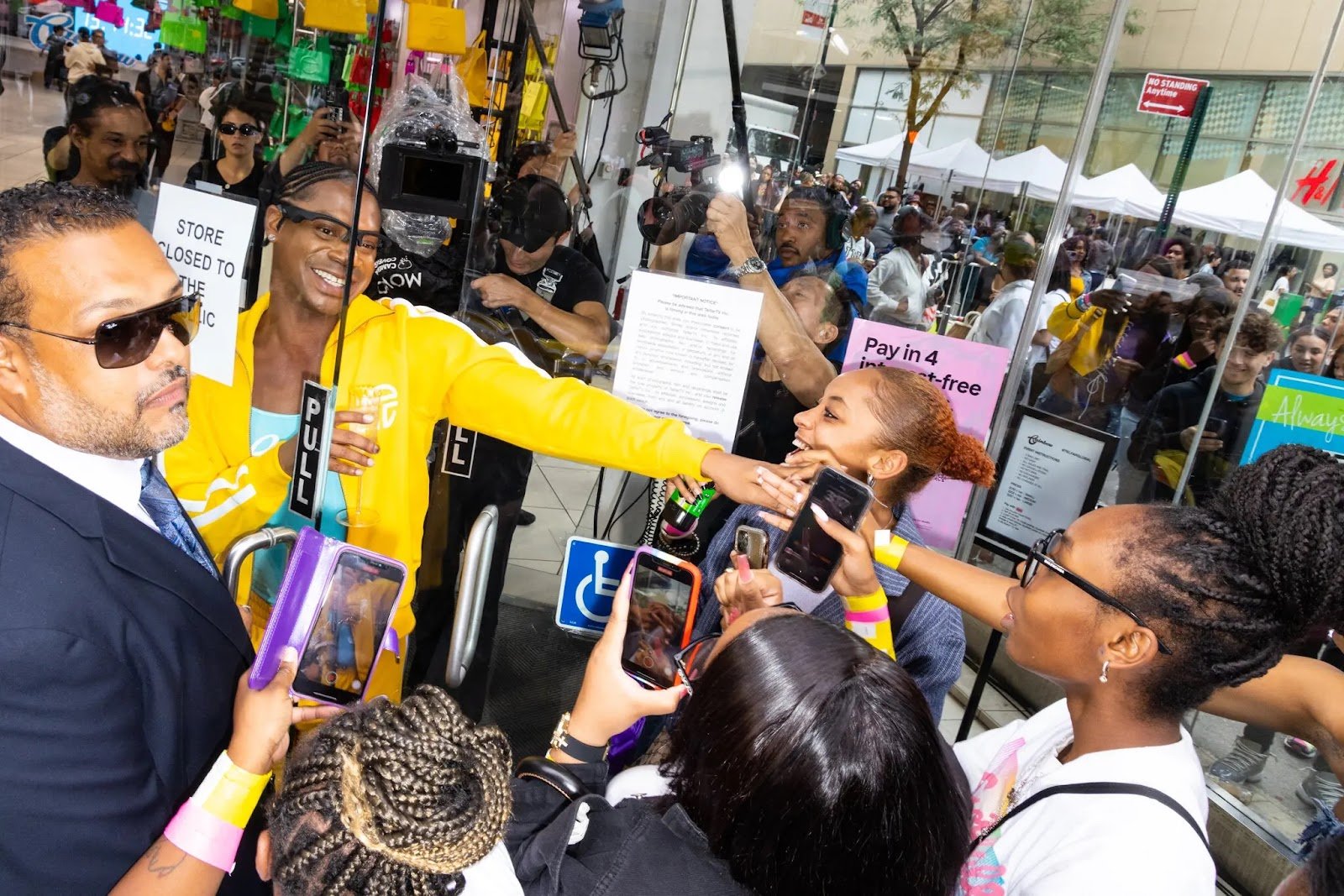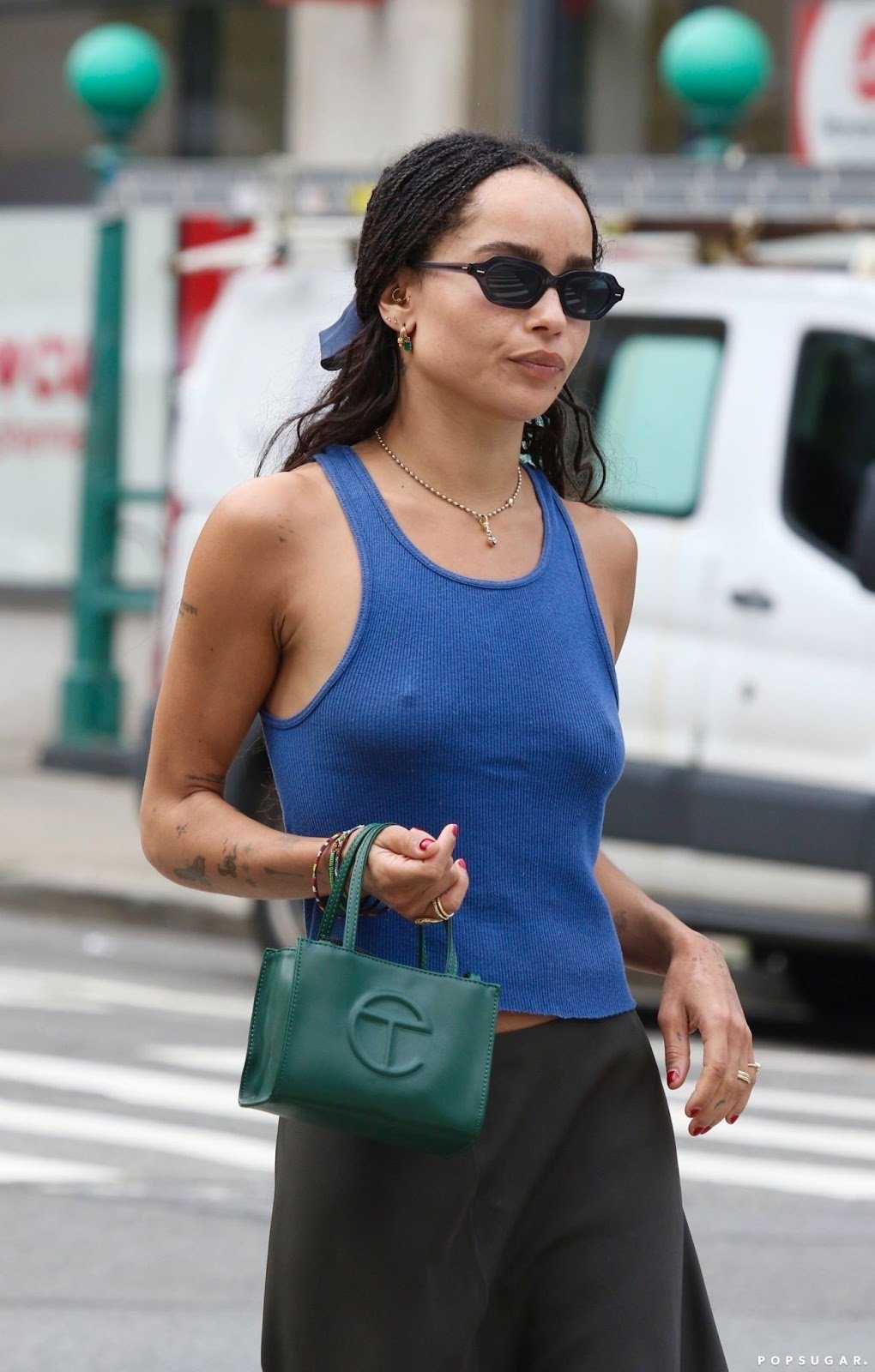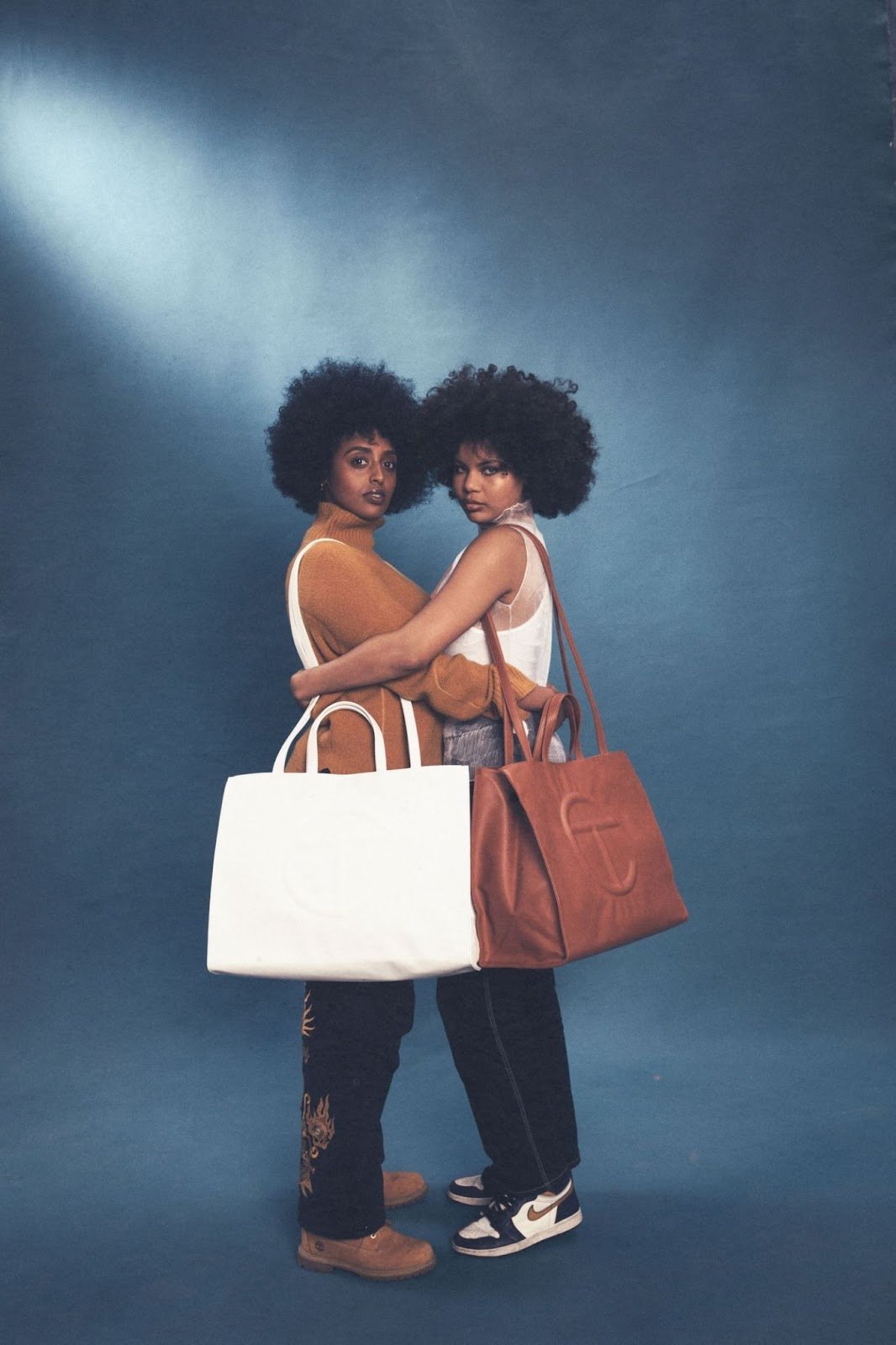Respect the Rainbow: The Telfar Rainbow Drop
No one is doing it like Telfar. Selling out bags with every drop, no matter the day or time, as if it were nothing. Celebrities have been seen toting around the “T” embossed bags at public events and in their daily lives. Gaining so much notoriety and public fame, it has even been nicknamed the “Bushwick Birkin.” But according to Beyoncé, they’ve transcended even being compared to a Birkin. As she says in her latest song Summer Renaissance, “ This Telfar bag imported, Birkins, them shits in storage.” All of this achieved publicity and hype accomplished without a physical storefront. It wasn’t until Sept. 11, 2022, that Telfar held its first pop-up in a Rainbow storefront.
Image courtesy: The New York Times
Downtown Brooklyn was waiting with bated breath for their pop-up shop to finally open its doors. As soon as those gates opened, a beautiful frenzy had awoken amongst the crowd. Dancers could be seen voguing across the shopping floor as a host extravagantly announced the time those shopping had left. Bags of all sizes and colors flew off the shelves and into the arms of those that hurriedly shopped. Outside, people brought their bags and wore the clothes the brand had already released with pride. Cameras clicked and flashed at the minis, mediums, and larges. The Telfar LiveTV hosts paraded themselves around those waiting in line, dripped out in the designer's apparel. All the chaos inside and outside the four walls of their pop-up location: Rainbow.
The store known for its trendy clothes and low prices was holding a celebrated event for a famous luxury brand during peak fashion week. A brand that does not hold the same acclaim that Telfar does. The demographics of both brands don’t publicly align. Rainbow’s demographic is those that live in “Urban” areas, like Brooklyn and Queens in New York and Little Havana and Liberty City in Miami. In addition, the average income of their customers' households is less than $60,000. As for Telfar, the clientele speaks for itself: Beyoncé, Dua Lipa, Zoë Kravitz, Oprah Winfrey, Bella Hadid, and Solange, to name a few. Nothing really holds these two brands together at first glance, only the fact that there was a collaboration. It is upon closer inspection that the difference between these two brands holds a commonality: making fashion accessible.
Image courtesy of: popsugar, Vogue, the cut
The price point for the Telfar bags ranges from $150 - $257, the bags’ prices growing according to their size. Staying in this price range has allowed consumers with varying financial backgrounds the opportunity to have access to a luxury that is currently a wanted commodity. This pricing contrasts with the growingly expensive handbag designer scene. In the past year, brands like Chanel and Louis Vuitton have seen a 10% increase in the price of their bags. Canvas bags jumped from $630 to $1,050, and classic flaps have done the same, from $6,800 to $8,800. The reason was to increase their exclusivity in the same way fashion house Hermes has managed to maintain with their Birkins and Kellys. Even brands previously known for their accessible price point are trying to do the same for themselves. The well-established Coach has been re-strategizing and aiming for the goal to no longer be seen as an accessible luxury. In an article by Business of Fashion, the chief executive of Coach, Todd Kahn, said that being labeled an accessible luxury brand has “‘put [them] in a box that we don’t live in anymore.”
Yet Telfar has been able to transcend this mindset of needing to hike up prices for the sake of exclusivity. The price point of their bags has made them inclusive, but their limited stock has allowed them to maintain their exclusive status. Strategic updates on weekly bag drops are tweeted and have always guaranteed people waiting behind computer screens for 12pm to come. Accessibility is not seen as a threat to Telfar because accessibility translates to a market that has not always been appreciated in fashion: a similar, if not the same, audience that shops in Rainbow.
Even though both companies' versions of accessibility may take on different price ranges, both brands understand and value the audience that comes with it. Rainbow’s mentioned “urban” audience is not seen as respectable, obvious enough in how luxury brands find the need to distance themselves from the “accessible” label. But this same audience is acknowledged, seen, and embraced by Telfar. Telfar is a black-owned luxury brand that is aware of this disparity in accessibility to luxury and trendy goods. As Telfar’s mission statement goes, it’s “Not for you - For everyone.”
Strike Out,
Alyssa Quarrie
Boca Raton
Alyssa Quarrie is a Content Writer for Strike Magazine Boca. When she’s not losing herself in another book, she’s working out with friends, looking for flights, and thrifting her wallet away. You can reach her at alyssaquarrie@gmail.com




